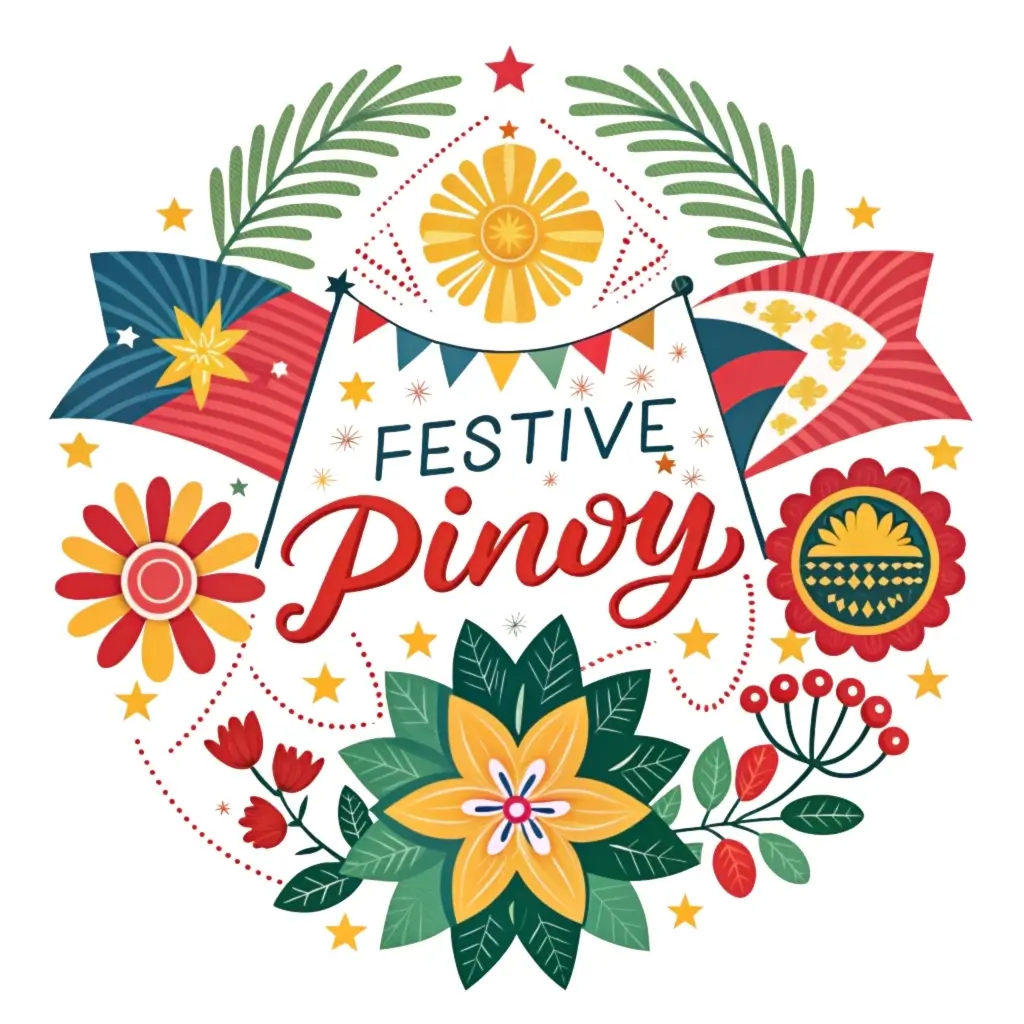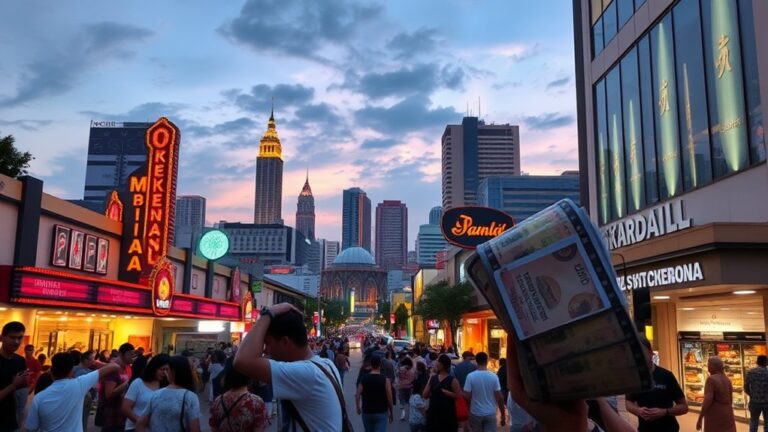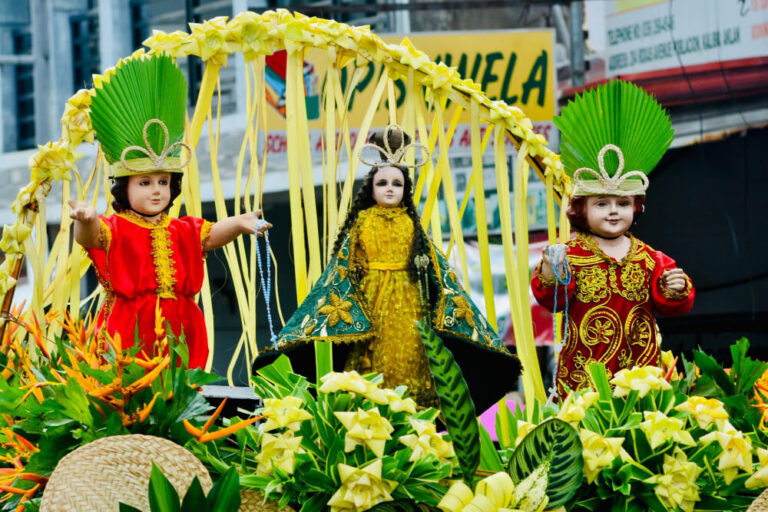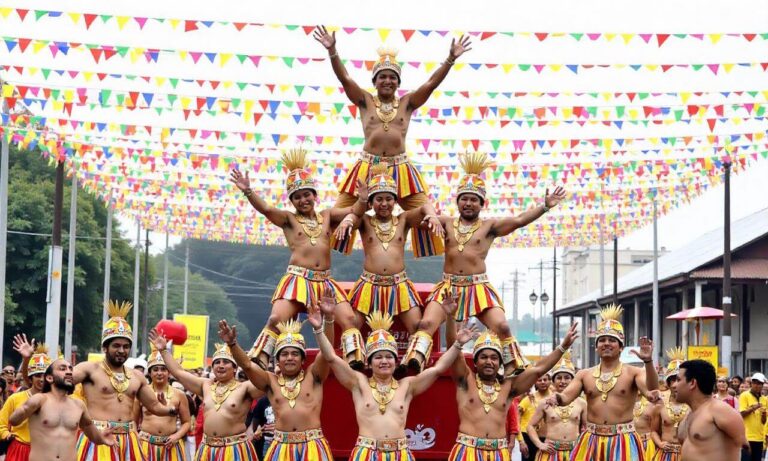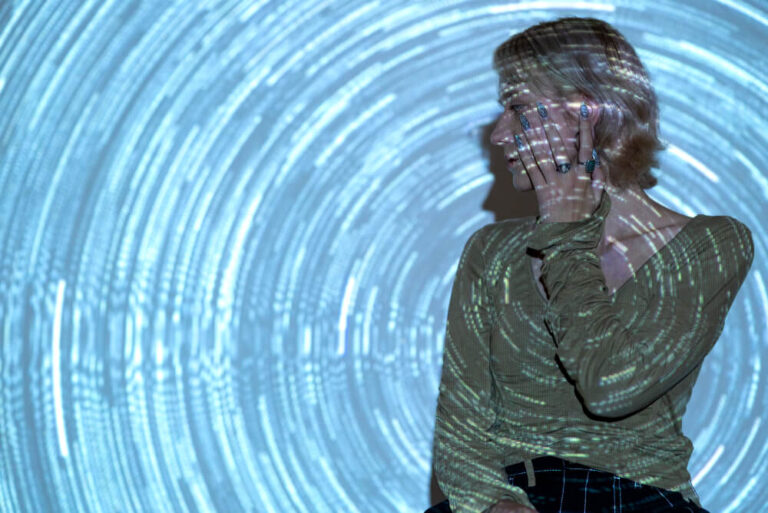Makatapak Festival: A Celebration of Resilience and Faith in Bacolor, Pampanga
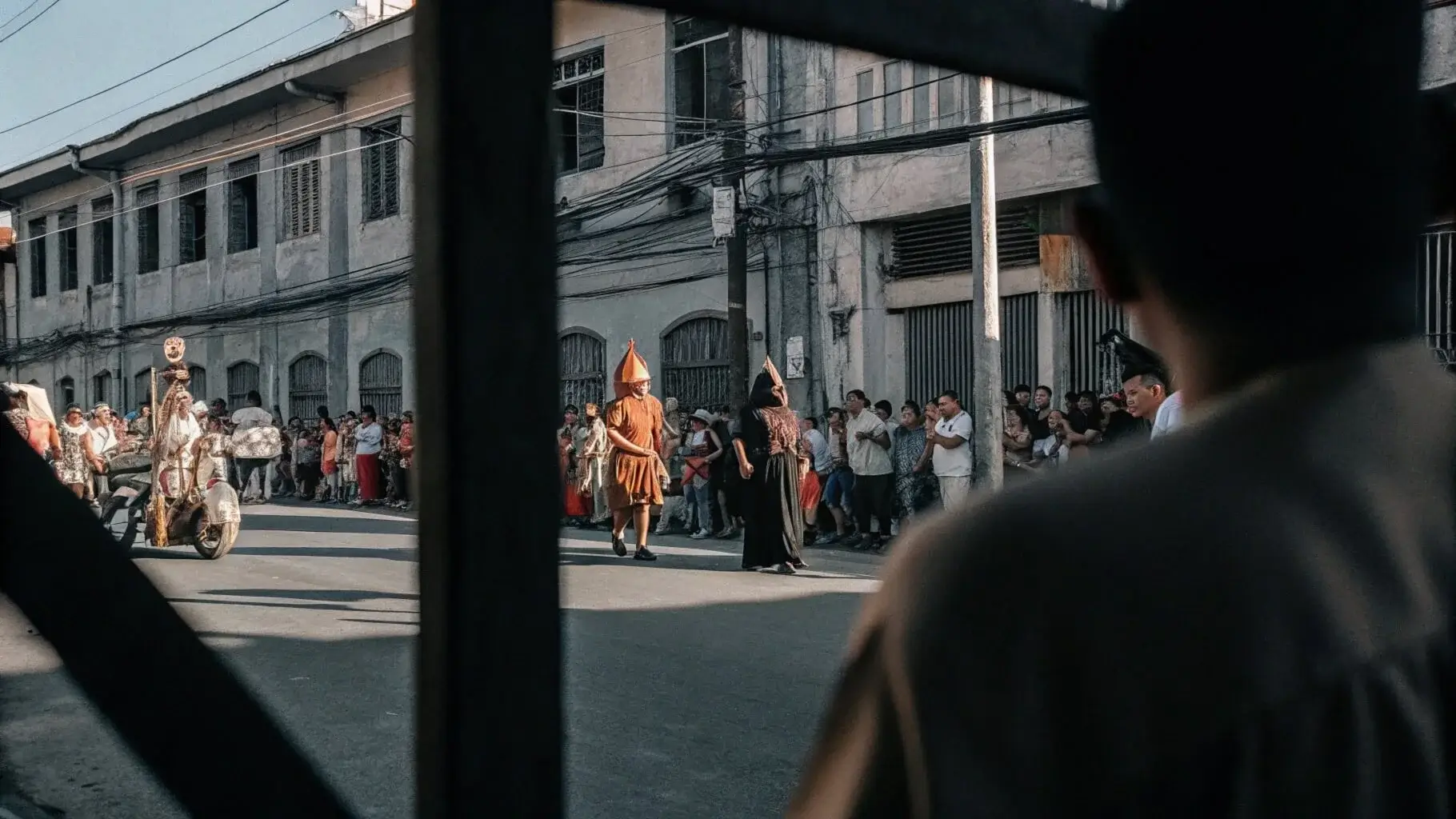
The Philippines, an archipelago of over 7,000 islands, is renowned for its vibrant culture and diverse traditions. From bustling cities to serene countryside, the nation offers a kaleidoscope of cultural experiences. Each region boasts unique festivals that showcase the spirit and resilience of the Filipino people. Among these captivating celebrations is the Makatapak Festival, held annually in the town of Bacolor, Pampanga.
Unlike many other festivals that celebrate harvests or religious events, Makatapak commemorates a community’s triumph over adversity. Makatapak, meaning “barefoot” in the local Kapampangan language, commemorates the strength and unity of the people of Bacolor in the face of a devastating natural disaster. The festival serves as a poignant reminder of the eruption of Mount Pinatubo in 1991, which buried the town in lahar, a destructive volcanic mudflow.
A Journey Back in Time
The eruption of Mount Pinatubo was one of the most catastrophic volcanic events of the 20th century. The eruption caused widespread damage, and Bacolor was particularly hard hit. For four long years, the town was submerged in lahar, forcing residents to evacuate their homes and seek refuge elsewhere. Some believed that the eruption was a manifestation of the anger of Apu Malyari, a god of the Aetas, who was displeased with the townsfolk’s misconduct towards Mother Nature.
Imagine the scene: a once-thriving town now buried under a thick layer of volcanic mud. Homes, businesses, and landmarks were swallowed by the relentless lahar flows. The people of Bacolor faced immense challenges, their lives upended by the forces of nature. Yet, amidst the devastation, they found strength in unity and a determination to survive.
During those trying times, the people of Bacolor had to navigate the treacherous lahar flows, often barefoot, to reach safety. The very ground beneath their feet was unstable and unforgiving. They carried their belongings and supported each other, demonstrating remarkable resilience in the face of adversity. The Makatapak Festival honors this spirit of survival and pays tribute to the shared experience that bound the community together.
The festival itself has a history as compelling as the event it commemorates. It originated in 2008, co-founded by then vice mayor Eduardo Diman Datu, during Fr. Jess Manabat’s tenure as the parish priest at the sunken church. After a hiatus in 2013, the festival was revived in 2019 by Mayor Eduardo Diman Datu, ensuring that the memory of those challenging years and the spirit of the Bacoloreños would live on.
Experiencing the Makatapak Festival
The Makatapak Festival is a vibrant and colorful celebration that takes place every November, coinciding with the town fiesta and the La Naval Fiesta Celebration. It’s not merely a festival; it’s a “Pilgrimage to the Past,” a journey back to a time of hardship and triumph.
The festival features a reenactment of the exodus from the lahar-stricken town, with participants walking barefoot through a designated route. This symbolic act serves as a powerful reminder of the challenges faced by the community and their unwavering determination to overcome them.
The act of walking barefoot is deeply intertwined with the festival’s name, “Makatapak.” It symbolizes the resourcefulness and resilience of the people during the lahar exodus, when footwear was often impractical or lost in the chaos. By walking barefoot, participants connect with the past and honor the strength of their ancestors.
The festival is a multi-faceted event with a range of activities that capture the essence of Bacolor’s culture and history. Here’s a glimpse into the key highlights:
| Activity | Description | Significance |
|---|---|---|
| Street Dancing | Competing groups, adorned in colorful costumes, showcase their talent and creativity through energetic and expressive dance routines. | This captivating competition often depicts scenes from the lahar exodus, incorporating traditional Kapampangan dance elements. It’s a vibrant display of artistry and storytelling. The Katribu Mag-Indi Group of Floridablanca, Pampanga, notably won the SAN GUILLERMO AWARD and BEST PERFORMER/ DANCER AWARD in 2012. |
| Imung Baculud | Participants bathe in the neck-deep waters of the Gugu River. | This unique ritual symbolizes cleansing and renewal, reflecting the community’s ability to rise above challenges and embrace a brighter future. It’s a powerful act of washing away the past and embracing new beginnings. |
| Religious Procession | A procession of the image of the Our Lady of Lourdes, the patron saint of Bacolor, takes place. | This procession highlights the importance of faith and devotion in the lives of the Bacoloreños. It’s a testament to the role of faith in providing strength and solace during times of adversity. |
| Food Festival | Visitors can indulge in a variety of local delicacies and traditional Kapampangan cuisine. | No Filipino festival is complete without a feast! This culinary aspect of the festival allows visitors to savor the flavors of Pampanga and experience the warmth of Filipino hospitality. |
| Ritual Dance | Traditional dances are performed, often with symbolic meanings related to the lahar experience. | These dances connect the present generation with the cultural heritage of their ancestors, preserving traditions and stories from the past. |
| Bathe with Lahar | Participants symbolically bathe with lahar, reenacting the experience of those who had to traverse the mudflows. | This activity serves as a visceral reminder of the challenges faced during the eruption and the resilience of those who endured it. |
To get a visual glimpse of the festival’s energy and vibrancy, you can watch videos showcasing the Makatapak Festival. One video captures the colorful street dancing and the procession, offering a dynamic perspective on the event. Another video highlights the Katribu Mag-Indi Group’s award-winning performance, showcasing the talent and creativity of the participants.
Costumes and Dances
Traditional Attire
The costumes worn during the Makatapak Festival are a vibrant expression of Kapampangan culture. Participants often don colorful attire that reflects the spirit of the festival. While specific details about traditional costumes are limited in the provided material, it’s evident that color and vibrancy play a significant role in the visual spectacle of the festival. Imagine a procession of dancers adorned in bright hues, their movements echoing the energy and resilience of the community.
Dance Styles
The dances performed during the Makatapak Festival are a blend of traditional Kapampangan movements and contemporary interpretations of the lahar exodus. The street dancing competition provides a platform for creative expression, with groups often incorporating props and storytelling into their routines.
These dances not only entertain but also serve as a powerful medium for preserving cultural memory and passing down stories from one generation to the next.
Witnessing the Makatapak Festival
The Makatapak Festival is primarily celebrated in the town of Bacolor, Pampanga. The street dancing and procession typically take place around the Poblacion, the town center. Visitors can immerse themselves in the festivities and witness the vibrant cultural expressions of the Bacoloreños. The energy of the crowd, the rhythm of the music, and the colorful costumes create an unforgettable experience.
Reflections on Resilience and Faith
The Makatapak Festival is more than just a celebration; it is a testament to the indomitable spirit of the human spirit. It showcases the resilience of the people of Bacolor, who faced a natural disaster with courage and unity. The festival also highlights the importance of faith in overcoming adversity and rebuilding lives.
For many, the festival is a deeply personal experience. Palermo and Josie Malang, for instance, never miss the Makatapak Festival. It’s their story, a reminder of their journey through the lahar. Josie recalls walking barefoot, the only way to navigate the treacherous mud, and the importance of faith in those uncertain times.
The Makatapak Festival serves as a powerful reminder that even in the face of devastation, communities can find strength in unity and hope in their shared experiences. It’s a celebration of the human spirit’s ability to overcome challenges and emerge stronger.
The festival also plays a crucial role in transferring the memory of the Mt. Pinatubo eruption to younger generations, ensuring that the lessons of the past are not forgotten. Moreover, it acts as a catalyst, reinforcing the sense of pride and belongingness of the Bacolorenos, connecting them to their history and identity.
Conclusion
The Makatapak Festival is a unique and inspiring event that offers a glimpse into the heart and soul of the Philippines. It’s a celebration of resilience, faith, and community spirit, reminding us of the power of the human spirit to overcome challenges and emerge stronger. More than just a spectacle of vibrant costumes and dances, it’s a testament to the enduring strength of the Bacoloreños and their ability to find hope and unity in the face of adversity.
If you’re seeking an authentic cultural experience that will touch your heart and inspire your soul, the Makatapak Festival in Bacolor, Pampanga, is a journey you won’t soon forget. Sources and related content
